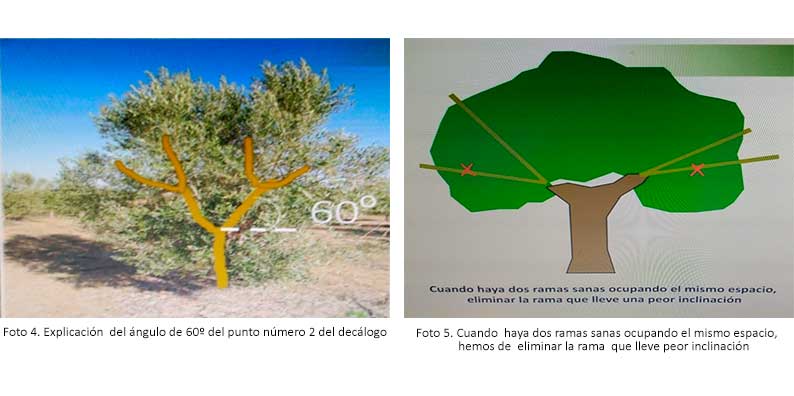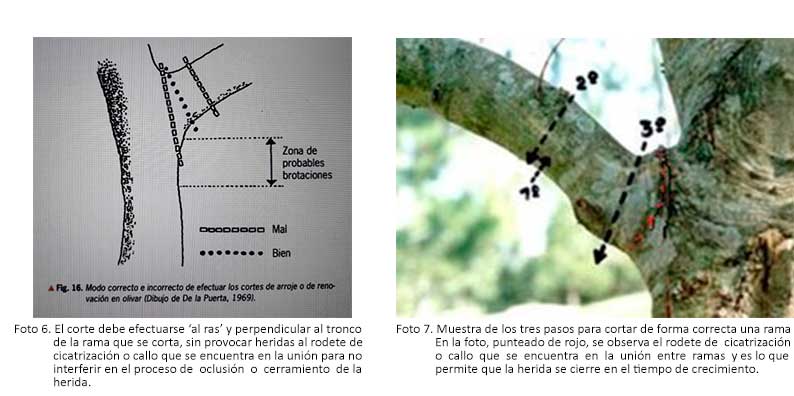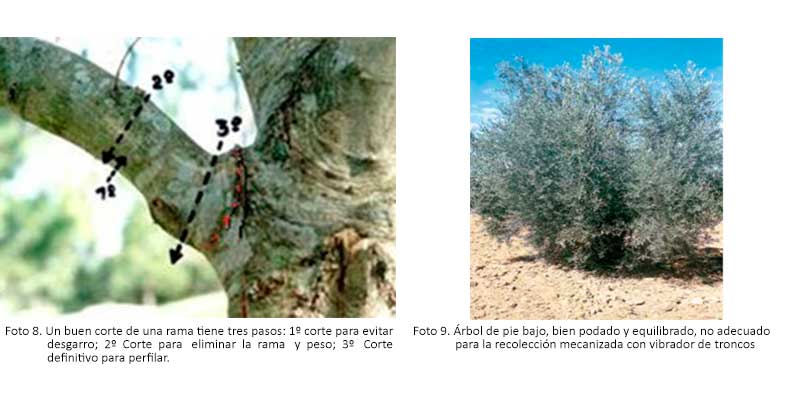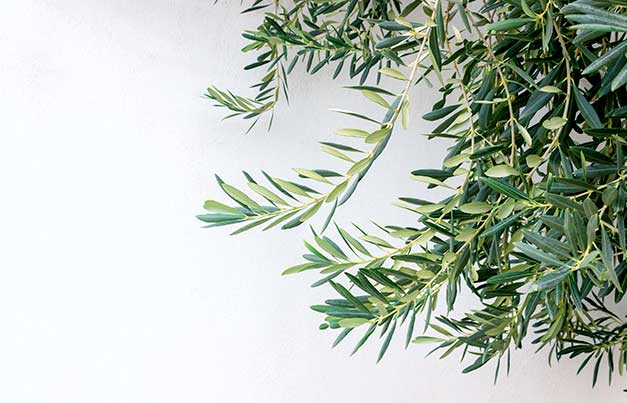News
PRUNING OF THE YOUNG PLANT AND THE OLIVE TREE FROM A TRUNK
The plant world is a living world. The pruner is the surgeon of these beings, and their skillful work requires a minimum of knowledge that is within the reach of anyone, as well as certain dexterity and a great deal of rigor in practice. In the olive tree, as in any fruit tree, three pruning stages must be considered:
Juvenile or formation stage. The purpose of training pruning
is to build the framework or skeleton of the tree. During this period, very
little pruning should be done. It is more common to practice tipping to reduce
the vigor of branches that predominate over others.
Growth and production stage. An unpruned olive tree tends to
produce more fruits than it can sustain. This characteristic becomes more
pronounced with age, and excessive harvesting greatly hinders the growth of the
year's shoots, resulting in reduced fruiting the following year and alternate
bearing. The goal of production pruning is to achieve, during the adult period,
a productive canopy volume in order to obtain maximum harvests, extending this
productive period. Eventually, the olive tree will require rejuvenation.
Old age or renewal stage. Towards the end of its adult
period, the olive tree begins to show signs of aging, starting an imbalance in
the leaf/wood relationship that leads to a decline in average yields, limited
growth of shoots, smaller and less colorful leaves, and even defoliation of
certain parts of the tree. These are indicators that signal the need to
rejuvenate the olive tree.
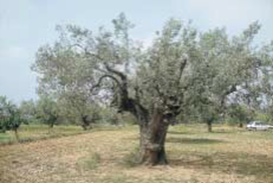
Photo 1. Olive tree with excess wood and weak shoots. It needs rejuvenation pruning.
What is the main
principle of pruning?
The main principle of pruning is to achieve a maximum number
of leaves supported by the least amount of wood. The leaves of the olive tree
are the factory that produces olives. The wood is an energy sink. For the same
leaf volume, fewer branches (wood) are better. It is important to explain the
basic principles of this pruning to the pruners, who are accustomed to the traditional
olive pruning with multiple trunks, such as the meaning of a branch at a
60-degree angle. For many, this is a "sucker" and they remove it.
How is it pruned?
Below is the Decalogue of Modern Olive Pruning from the
educational bibliography of Servifapa.
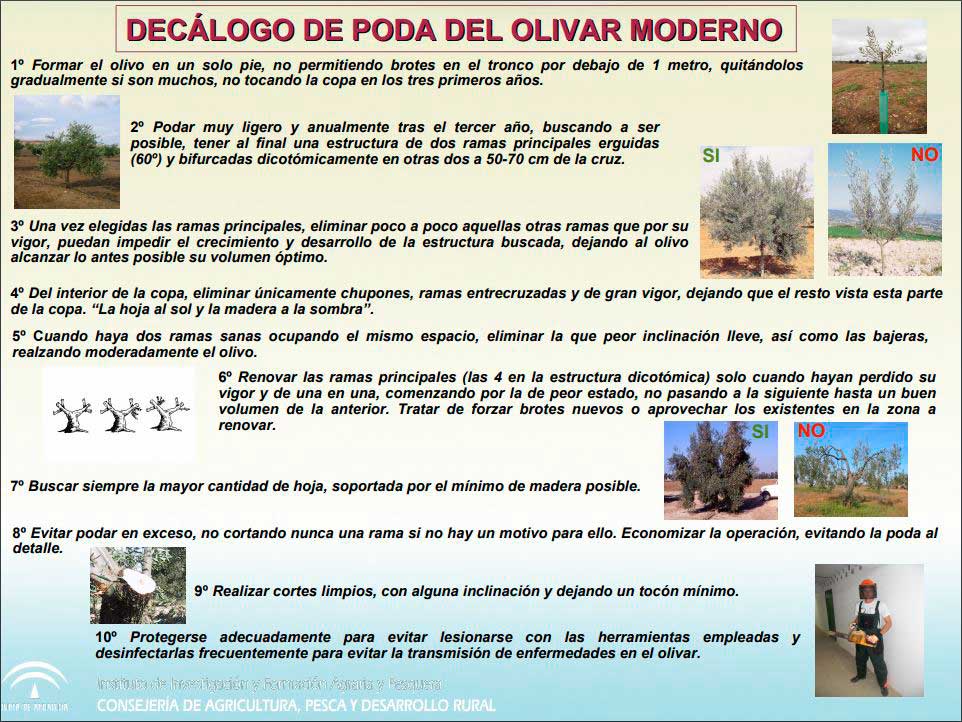
Photo 2. Servifapa
We complete this information with the following
clarifications regarding the points in the decalogue. Regarding the 1st and 2nd
points, which state: 'not touching the canopy in the first three years,' we
emphasize that it is necessary to maintain this criterion unless, upon visual
observation, the olive sapling shows very rapid growth in the second year, with
the dominance of a single central branch. To prevent having
"olive-cypresses" without a cross formed one meter above the ground
in the third year, it is advisable to tip the apex of the predominant branch to
reduce its vigor and allow the formation of the cross.
When should pruning
be done?
As a general rule, pruning should be done when the
vegetative activity of the olive tree is at its minimum (from December to
March). Pruning should take place after the harvest, avoiding pruning when the
sap is already flowing, as wound healing is worse at that time.
What is the pruning
scheme for a sapling?
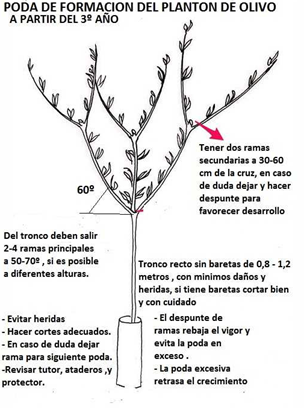
Photo 3. JLCS Drawing
Clarifications:
There are two reasons to leave the branches that emerge from the trunk at about
60 degrees from the horizontal:
- More
vertical branches transmit vibrations better than more horizontal ones.
- The
angle of the main branches (60 degrees) is related to the height of the
olive tree and the maximum width or diameter of the olive tree, which, in
turn, is related to the planting frame and the free space for machinery to
pass through the row.
Illustrative images:
